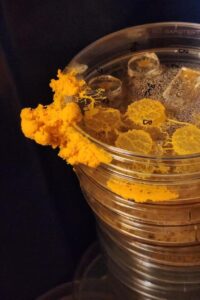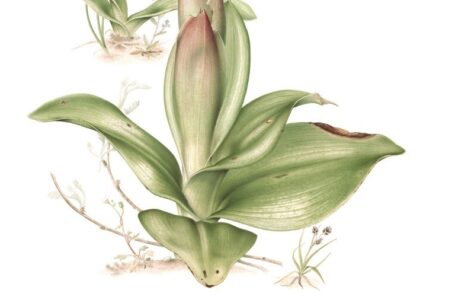Investigating cooperativity in slime molds is a tough job
Slime molds are unique microbes that can be found all over the world in damp environments, often on decaying wood. Biologist Cathleen Broersma of Leiden University employs these fascinating organisms, which she fondly refers to as “cool creatures”, to investigate how cooperation is maintained.

The slime mold studied by Broersma looks like a vibrant yellow smudge and is often referred to as "the blob", even though its real name is Physarum polycephalum. Because mold is included in its name, there's a common misconception that slime molds are fungi. However, Broersma clarifies that although they might bear a resemblance, they belong to a distinct category within the Amoebozoa. “In all honesty, I think the name should be changed entirely, but I doubt such a change will ever occur.”
Slime molds have the ability to fuse together, forming rapidly expanding networks that look like roadways on a map. Remarkably, they are easily preserved, and if deprived of nutrients, they dry up into compact, crumbled lumps, Broersma explains. With a trickle of water, you can bring them back to life. “We have drawers full of little fragments of these networks,” she says. Broersma uses these samples to investigate how conflicts between cooperating individuals get resolved in nature.
Road tax
Cooperation between members of the same species is a familiar concept. Think of how bees can diligently maintain their colonies. According to Broersma, there are several mechanisms that maintain cooperative relationships. For example, you punish those who do not cooperate and you reward those who do cooperate. “The roads fall into disrepair when too many people refuse to contribute to road taxes. All road users suffer from this, also the ones that do pay,” illustrates Broesma. “ To address the offenders, fines are usually imposed.” Broersma hopes to find mechanisms like these in her slime molds.
Broersma uses slime molds due to their unique cellular structure. Unlike animals and plants, they consist of a single large cell housing lots of nuclei. These nuclei are identical and function as individual control centers that collectively control the slime mold. Genetic errors can sometimes cause DNA to change. If this happens to a subset of nuclei, a conflict may arise according to Broersma. This is because the nuclei are no longer uniform. Subsequently, this could lead to discord within the organism about which nuclei are allowed to pass their genetic material to the next generation.

Challenges
To find out how cooperation works between a slime mold’s nuclei, Broersma needs a slime mold with genetically different nuclei. This is quite tough to realise. “The problem is that slime molds only fuse with fragments that are genetically equal to itself,” Broersma explains. This is something she finds both cool and frustrating. “Slime molds easily throw foreign DNA out of their system.” To bypass this problem, Broersma tries to split a large network of one singular slime mold and make one of the two pieces resistant against antibiotics.

This will cause a genetic difference, but this is not so large as to stop the network fragments from fusing again. What happens next with the network is entirely dependent on how cooperation is organized between the nuclei. If the nuclei of both networks work together, the mixed slime mold can grow without problem in the presence of antibiotics. If they do not work together, only the part of the network which has nuclei that are resistant against the antibiotics will survive.
Unfortunately, making her slime mold resistant to antibiotics is not an easy task, Broersma has been trying this approach for a very long time. “We initially believed we had achieved success, only to realize otherwise. The slime mold becomes resistant to the antibiotic and starts producing a lot of slime to protect itself, without any genetic alterations. If you remove the antibiotic, these effects disappear again.”
Slime mold trade
Given the challenge of making her slime mold resistant, Broersma has reached out to other research groups asking them what slime molds they use. She wanted to Given the challenge of making her slime mold resistant, Broersma has reached out to other research groups asking them what slime mold variants they use. She wants to find out whether other variants of this slime mold species are easier to make resistant. “There are companies that grow slime molds and sell them to schools so that students can study how slime molds grow.” Broersma pauses for a moment before continuing, laughing, “It's not common in microbiology,, but many research groups apparently get their slime molds from these companies and don't know anything about the genetic background of the slime molds that they're working with.”
Ultimately, Broersma did manage to find some new slime mold variants, courtesy of a research group in Japan. “They still had those in the freezer, ” she clarifies. Despite the initial challenges, Broersma finds genuine fulfillment in her work. “I worked in industry for a year, but I found that terribly boring,” she confessed. Her fascination with slime molds endures. “Slime molds form remarkably intricate networks and have astonishing growth rates. Sometimes I come into the lab after the weekend and find a slime mold that has outgrown its plate and colonized the entire tank.”







0 Comments
Add a comment